The parade begins just after rush hour.
A series of yellow contraptions slowly rolls down the tracks. They look like something Dr. Seuss might have dreamed up, and you want them to have Dr. Seussian names – something like the Automatic Puller-Outer Gizmo or Whatchamacallit Thingamabob 3000. Instead, they are boringly named after their functions – the tie extractor, the tie crane, the anchor spreader, the rail broom, the tamper, the spiker.
Each of them performs an important task in our annual effort to replace worn ties on our system. Deployed in what we call a “tie gang,” the machines are used to replace 30,000 to 50,000 railroad ties each year. If the operation is flowing smoothly, the gang can replace 800 to 1,000 ties a day.
Although the parade is a routine event, most riders haven’t seen it, since the work is necessarily done in the off-peak hours after they have already arrived at work. To give riders a feel for this interesting process, we went out with a tie gang that was working on a three-mile section of the Rock Island line on the south side of Chicago.
The gang is made up of about 14 machines and about 32 workers. It starts simply, with General Track Foreman Juan Rosales, a 26-year Metra veteran, walking the rails and spraying a bright yellow dot on all the ties that need to be replaced. After that, the machines, each of them controlled by skilled operators, take over.
First, the spike puller rolls along and, well, pulls out all the spikes from the ties to be removed.
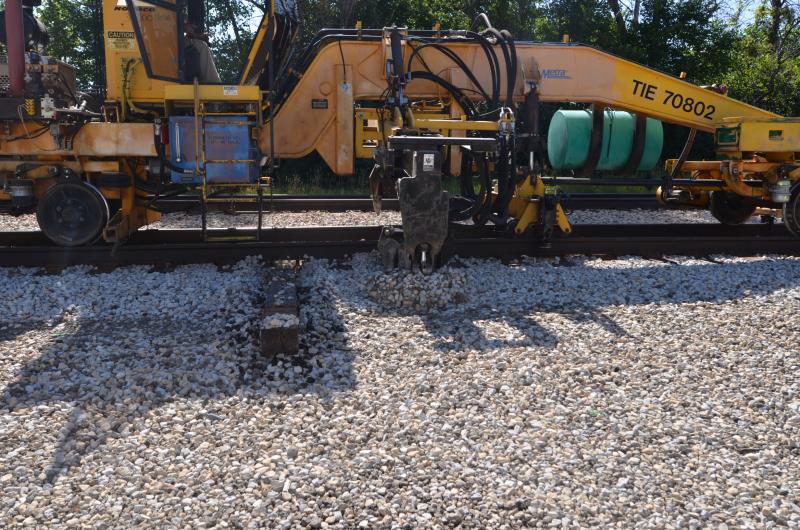 Tie remover
Tie remover
Next comes the tie remover. It sinks a set of jaws into the ground around the worn ties, grabs them on the edge and quickly and easily pulls them out from under the rail, sucking some of the ballast (the rocks surrounding the ties) along with it, and dropping it on the side of the tracks. Back in the day, before these specialized machines, worn ties had to be dug out with shovels and then extracted with tie tongs and old-fashioned muscle power – a much slower process. For the machine, it’s as effortless as removing a block from a Jenga block tower.
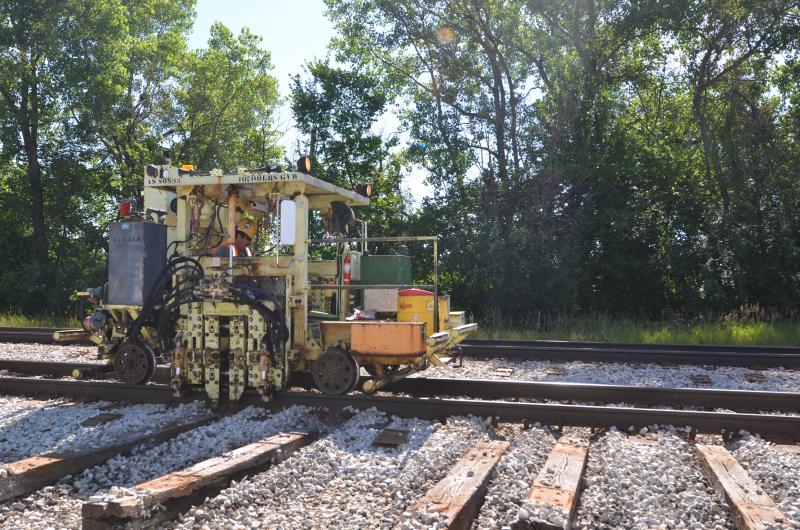 Spreader
Spreader
The remover is followed by the anchor spreader. The anchors are attached to the base of the rail and are designed to prevent the rail from moving lengthwise on the ties. The spreader moves the anchors so a new tie can fit between them.
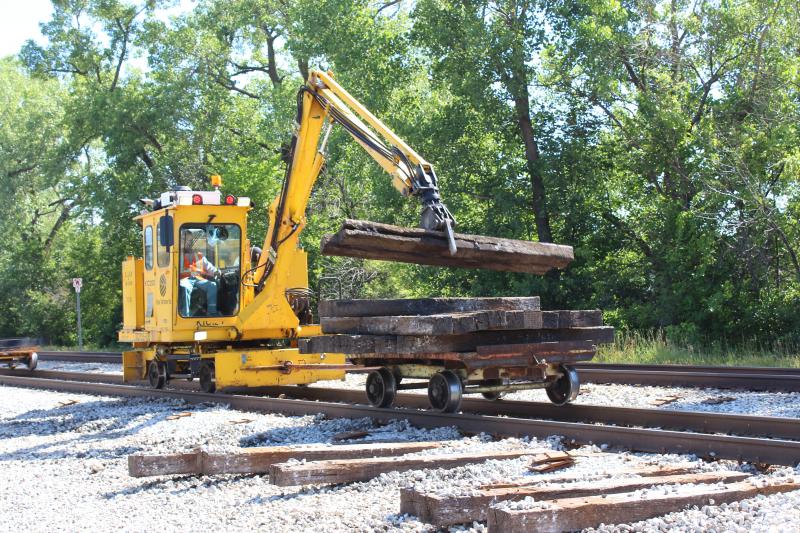 Tie crane
Tie crane
A couple of tie cranes follow the spreader. One uses its long arm to pick up the old ties on the side of the tracks and pile them on a railroad trailer. The other grabs new ties from a stack and lines them up with the toothless gaps left by the removal of the old ties.
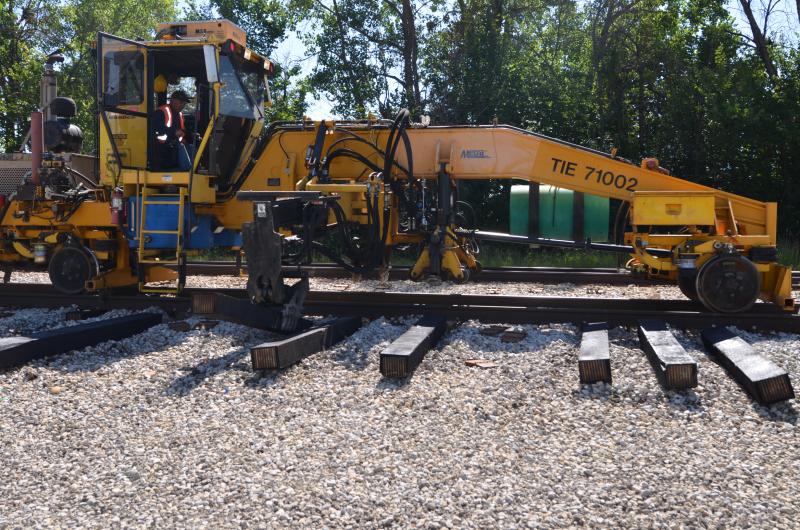 Tie inserter
Tie inserter
Along come the tie inserters. They grab the new ties, wedge them into the ground and thrust them into the gap under the two rails. Again, the machine turns what used to be a strenuous task into an effortless one.
 Rail broom
Rail broom
The inserters are followed by the rail broom. Removing and inserting the ties disturbs the ballast. The broom has several rotating brushes that sweep the rocks from the tracks and start to level and restore the ballast around the ties and track. Thick rubber sheets that hang on the front and sides of the broom deflect the rocks to the ground and protect the nearby workers.
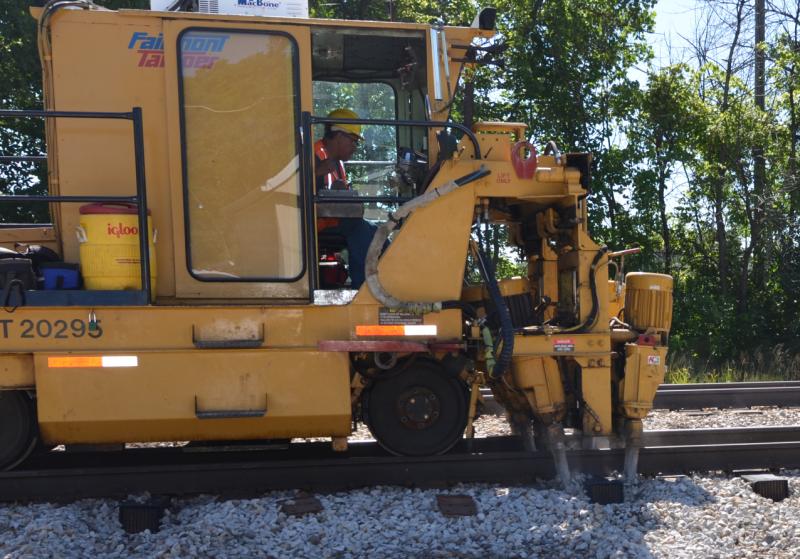 Tamper machine
Tamper machine
Next comes the tamper machine. It has paddles that reach down to push and compact the ballast rocks under and around the ties so they are properly leveled under the rails. It takes just seconds per tie.
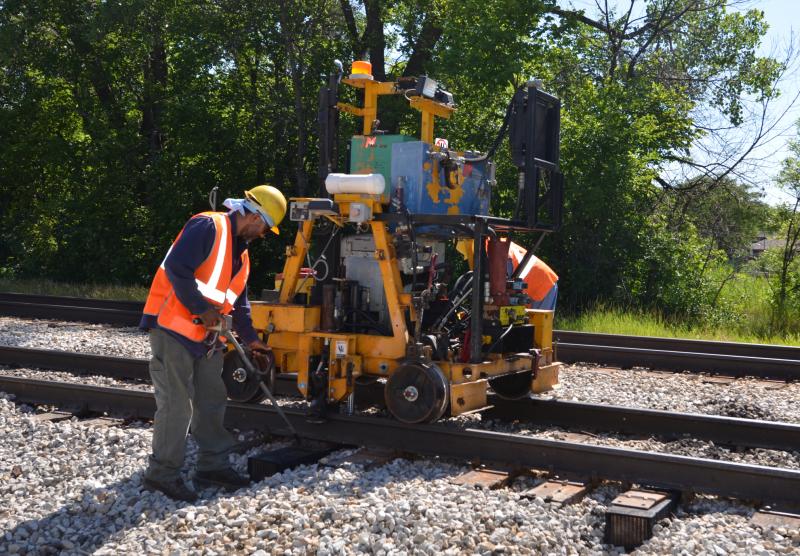 Rail lifter
Rail lifter
Now that the ties are properly positioned under the rails, they need to be attached to them. There are different rail fastening systems, but Metra generally uses tie plates between the rail and tie and spikes to fasten the rail to the tie. The next machine that comes along, the rail lifter, helps to do that. It grabs the rail and lifts it up so that workers can slide a tie plate between the tie and rail.
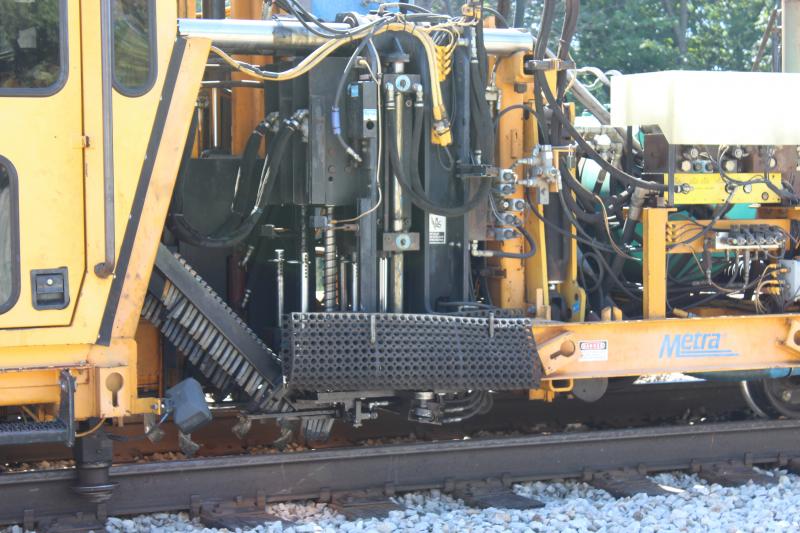 Spiker
Spiker
The spiker then rolls along and hammers a spike through a hole in the tie plate into the tie. The tie is now firmly connected to the tracks.
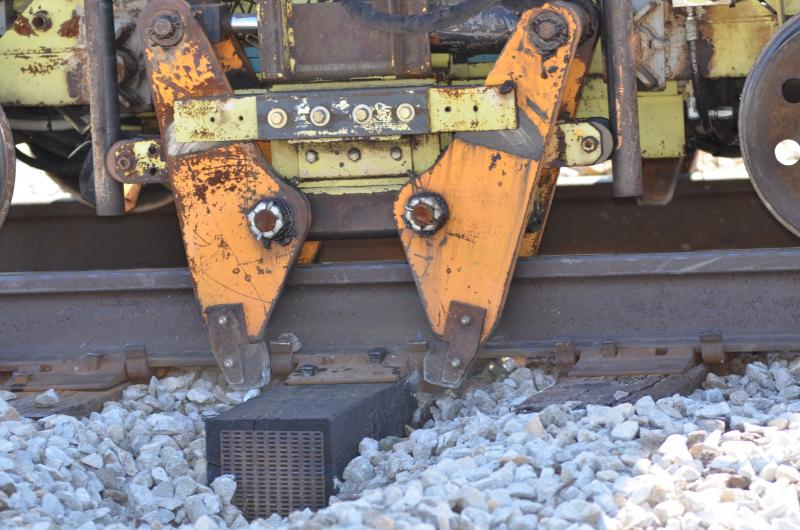 Anchor adjuster
Anchor adjuster
The last machine, the anchor adjuster, can now pull the anchors around the new ties.
The tie gang is followed by a surfacing gang, usually the next day. The tracks can be used in the interim, but only after an inspection and only at restricted speeds. It’s another parade of machines, but a smaller one. The surfacing gang starts with a laser-guided tamper machine that makes minute adjustments to precisely line up the rails vertically and horizontally.
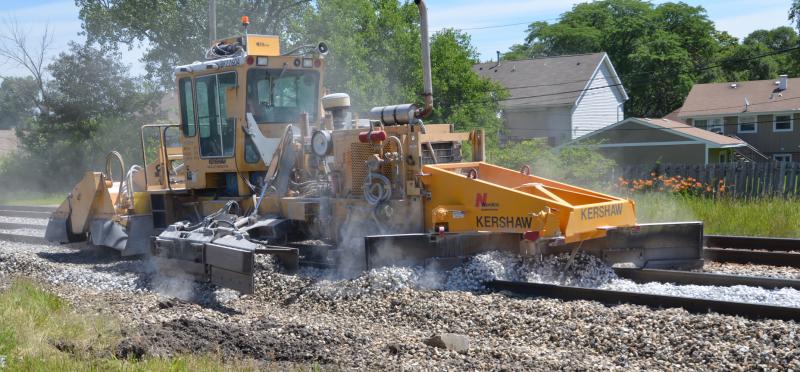 Ballast regulator
Ballast regulator
It is followed by a ballast regulator that distributes the old and some new ballast so that it properly supports the tracks. The last machine is called a stabilizer. It rolls along the tracks very slowly and vibrates the ground to compact, strengthen and stabilize the ballast.
With one final inspection, the tracks can now be used at full speed.
Consider the simple railroad tie:
The purpose of the railroad tie (also known as a sleeper in other parts of the world) is to hold the rails in place and distribute the weight of the train to the ballast and subgrade.
An average mile of track in the United States has 3,249 ties.
For the Metra system, which has 1,155.1 miles of track, that works out to 3,752,919 ties, not counting the ones in yards.
Metra does not maintain the tracks on the BNSF and three UP lines, nor does it maintain those on the Heritage Corridor and North Central Service lines, which are owned by CN. That leaves about 399.4 miles of track for Metra, or about 1,297,650 ties.
We replace 30,000 to 50,000 ties a year, or about 2.3 to 3.8 percent of the total on Metra-maintained tracks. The freight railroads also have routine tie-replacement programs.
More than 93 percent of the railroad ties in the United States are made of wood, according to the Railroad Tie Association, an industry group. Almost all are pressure-treated with EPA-approved creosote or creosote blends to prolong their life.0